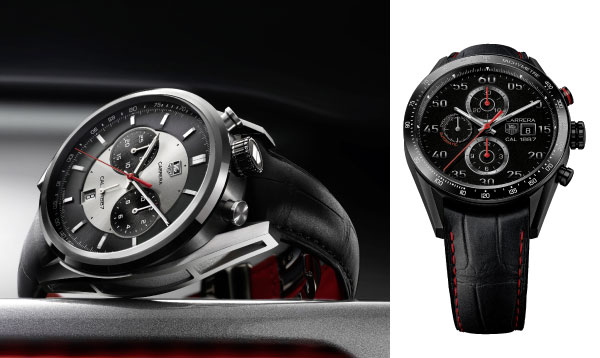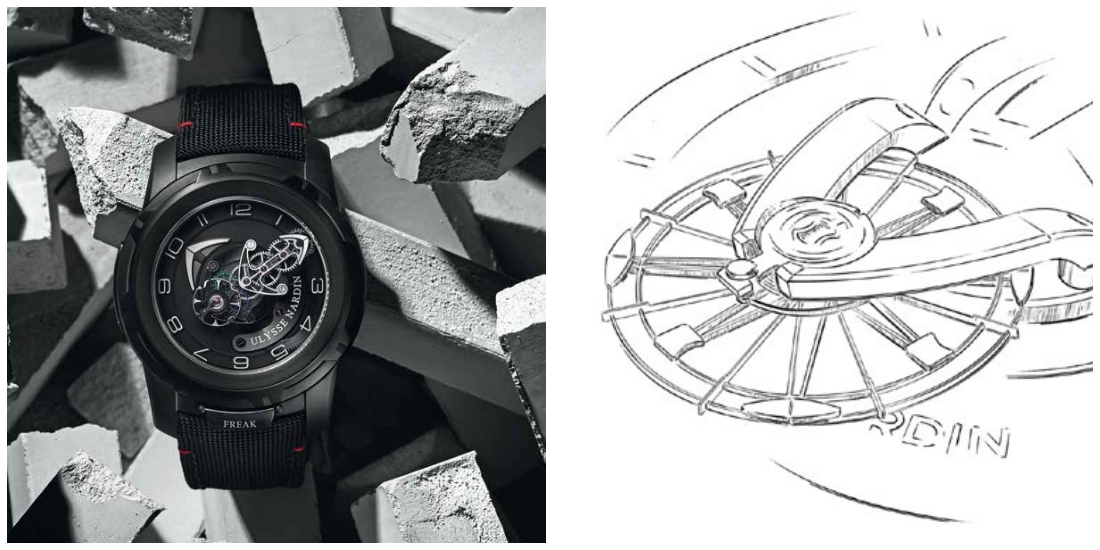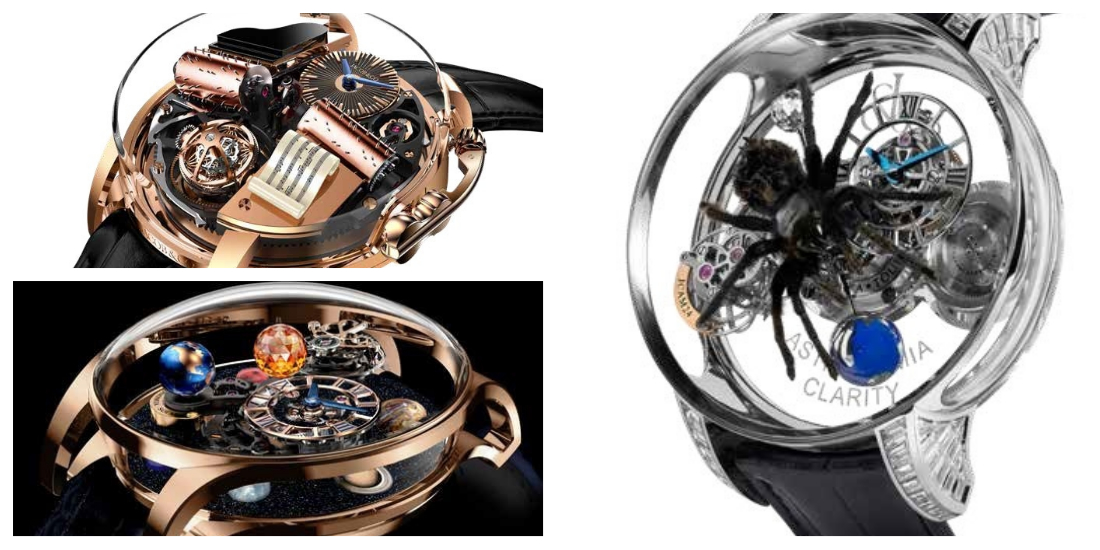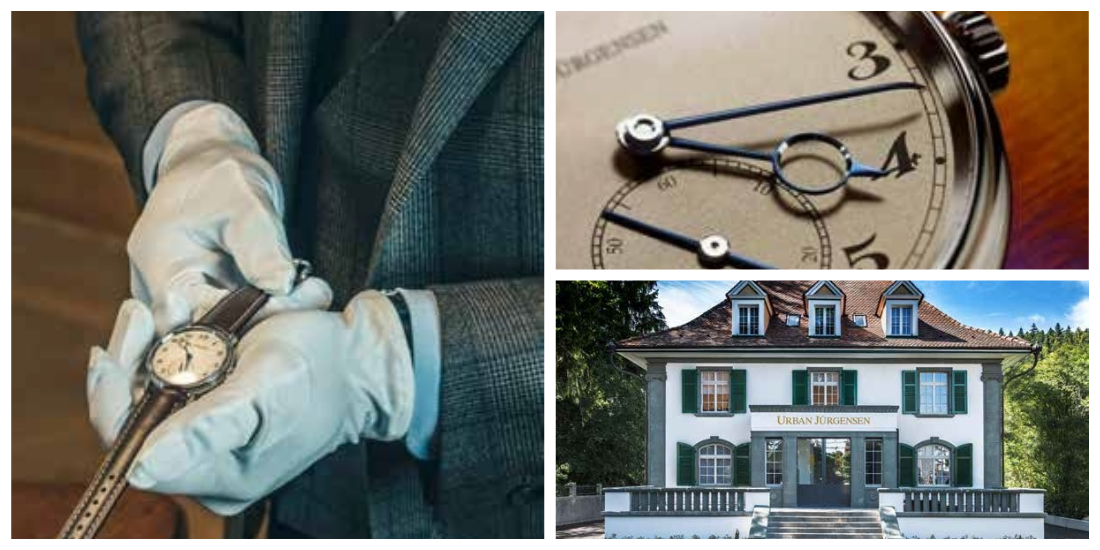
Carrera Calibre 1887 Jack Heuer 50th Anniversary Edition
Case : hand-polished/satin-finished black titanium carbide Diameter : 45 mm Movement : self-winding mechanical movement (Calibre 1887, 50h power reserve), 320 parts Functions : hours, minutes, seconds, date, column-wheel chronograph, tachometer, pulsometer Dial :black and grey, applied rings around chronograph counters with azurage at 6 and 12 o’clock, polished silver hands Water resistance : 100 m Strap : black leather
Carrera Racing Calibre 1887 Chronograph
Case : sandblasted titanium Grad 2 case with black titanium carbide coating, ceramic bezel, scratch-resistant curved sapphire crystal with double anti-reflective treatment Diameter : 43mm Movement : self-winding mechanical movement (Manufacture caliber 1887, 42h power reserve) Functions : hours, minutes, seconds, date, 3-counter chronograph, tachymetre scale on the flange Dial : hand-applied black gold* Arabic numerals, polished black gold* hour and minute hands with luminescent markers Water-resistance : 100m Strap : high-tech soft touch black alligator strap with red stitching and lining, titanium Grade 2 folding clasp with safety push buttons
The Carrera Calibre 1887 Jack Heuer 50th Anniversary Edition tells a story. That of TAG Heuer and of Edouard Heuer’s grandson who is now Honorary Chairman of TAG Heuer : Jack Heuer. It derives its legitimacy from the brand history, extending the quest for reliability and innovative spirit that have guided the development of Carrera models for 50 years and culminated in 2013 with the launch of the Carrera Calibre 1887 line. This chronograph featuring an asymmetrical case and with a subtle bullhead design housing the crown and pushers. On the technical side, while its two-part design is a nostalgic nod to that of 1960s Heuer automobile chronometers, pride of place is given to high-tech elements stemming from the world of Formula 1 and aeronautics : a black titanium carbide bezel hand-polished to achieve an amazing shine ; a satin-brushed and sandblasted steel cage ; along with a tachymeter and a pulsometer on the dial. On the back of the model, a sapphire crystal provides fascinating glimpses of the 1887 caliber. Many respects, this model is a dazzling tribute to the unique vision of Jack Heuer, a pioneering frontrunner in the field of watch technology and design.
Besides, at the helm of this year’s TAG Heuer Carrera rollout is one of the line’s most elegant and sporting creations to date. Housing the brand’s high-rate Calibre 36 automatic chronograph movement (named for its 36,000 beats per hour frequency), it features an authentic fly-back complication. Inspired by automobile racing, the function lets drivers (and aviation pilots) instantly restart and reset without stopping. The generous case is in super-light titanium Grade 2, the same corrosive-resistant alloy used in leading-edge aerospace, automotive and architectural design. Here it is sandblasted and specially treated with a black titanium carbide coating for extra allure. The Carrera Calibre 36 Chronograph Flyback “Racing” has an anthracite dial decorated with TAG Heuer’s signature sunray effect, with “black gold”-polished and hand-applied Arabic numerals on the external chronograph scale, and on the red-tipped chronograph and small seconds hand. The smoked sapphire caseback provides a scratch-resistant window onto the working components of the high-precision movement beating inside.The new strap design, inspired by motor-racing leathers and steering wheel covers, is in crafted black leather with a black perforated layer and a black titanium Grade 2 folding clasp.

Over the last decade, TAG Heuer’s Avant-Garde Haute Horlogerie workshop (a 40-person team of scientists, engineers and designers) has pulled off some of the most revolutionary coups in watchmaking history. In 2013 TAG Heuer launched the first high-frequency chronograph moved by magnets : the Carrera MikroPendulum, inspired by the Carrera Mikrograph, the first integrated column wheel mechanical 100/s wrist chronograph with a flying central hand display. Like all Mikro creations, it is a dual chain platform with a balance-wheel system for the watch and a hairspring-less pendulum system for the chronograph (360,000 beats per hour !). The crown rewinds the chronograph : the watch is run on a classic COSC-certified automatic movement powered by an oscillating weight. There are 371 components in the dual-chain structure, each designed, crafted and assembled by TAG Heuer’s Haute Horlogerie team of master watchmakers and engineers. The chronograph minutes counter is at 3 o’clock, the chronograph seconds at 6, and the chronograph power reserve indicator at 12 o’clock. The 100ths of a second are displayed by a sweeping red central hand–and measured out on an a 1/100th of a second scale on the anthracite flange.
With its 19 grams of pure technology, the Carrera Carbone Calibre 1887 Concept Chronograph establishes itself as one of the most futuristic interpretations of the original 1963 Carrera. Powered by the famous 100% in-house made Calibre 1887 (see previous page) it features a case with asymmetrical lugs inspired by the Carrera Mikrogirder. While the crown and pushers are traditionally placed at 12 o’clock, the case, the caseback and the bezel are made of ultra-thin reinforced carbon fibre, a material borrowed from the field of Formula 1 and aeronautics, and which requires a highly complex miniaturised production process. Lightness and exceptional resistance, combined with absolute precision in every detail. Its appeal lies in a combination of original design and avant-garde technology. The temptation to acquire one is likely to prove virtually irresistible…
Carrera Carbone Calibre 1887 Concept Chronograph
Case : lightweight, super-resistant carbon (weight : 10,5gr), crown and pusher at 12 Diameter : 45mm Movement : self-winding mechanical movement (Caliber 1887, 42h power reserve). 320 components Functions : hours, minutes, seconds, date, chronograph Dial : black carbon with luminescent numerals Water-resistance : 100 meters Strap : High-tech soft touch black alligator strap and Steel folding clasp with safety push buttons.
Carrera MikroPendulum
Case : sandblasted, fine-brushed and polished Grade 5 titanium, rubberized crown Diameter : 45mm Dial : anthracite grey, fine-brushed on one side with Côte-de-Genève finishing under the pendulum Movement : self-winding mechanical movement (42h power reserve), dual chain platform with a 4 Hz balance-wheel system for the watch and a hairspring-less pendulum system for the chronograph (50hz, 90mn power reserve), 371 components Functions : hours, minutes, seconds, 3 counter chronograph with 1/100th of a second scale on the flange Water-resistance : 100 meters Strap : hand-sewn anthracite alligator with black titanium folding clasp





